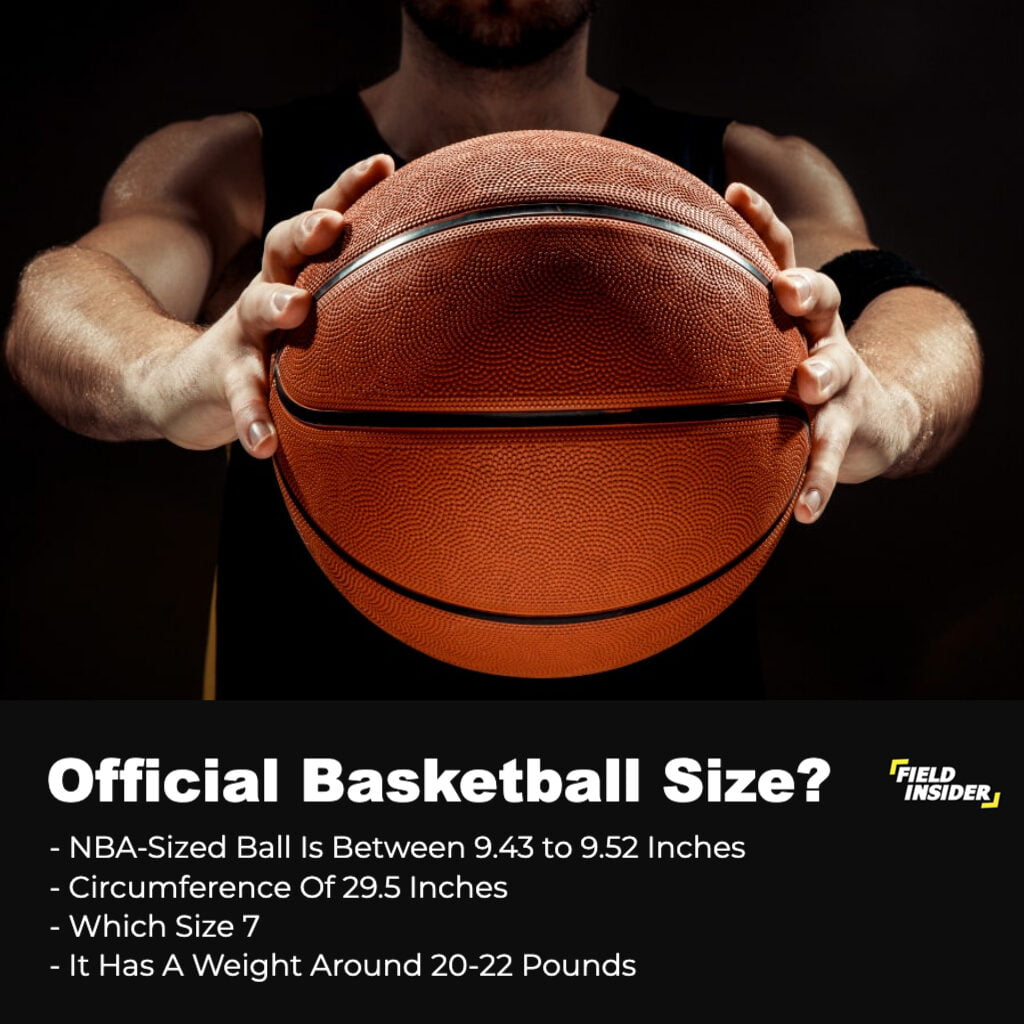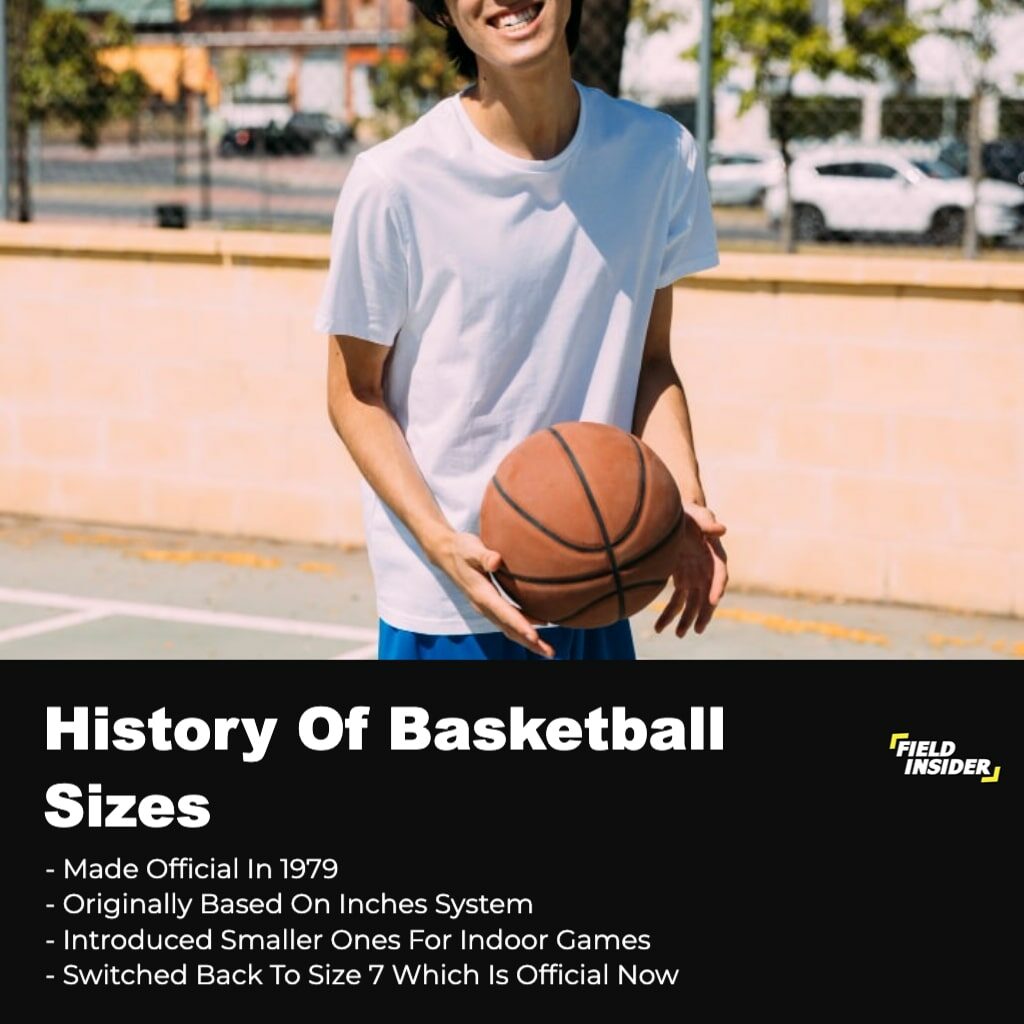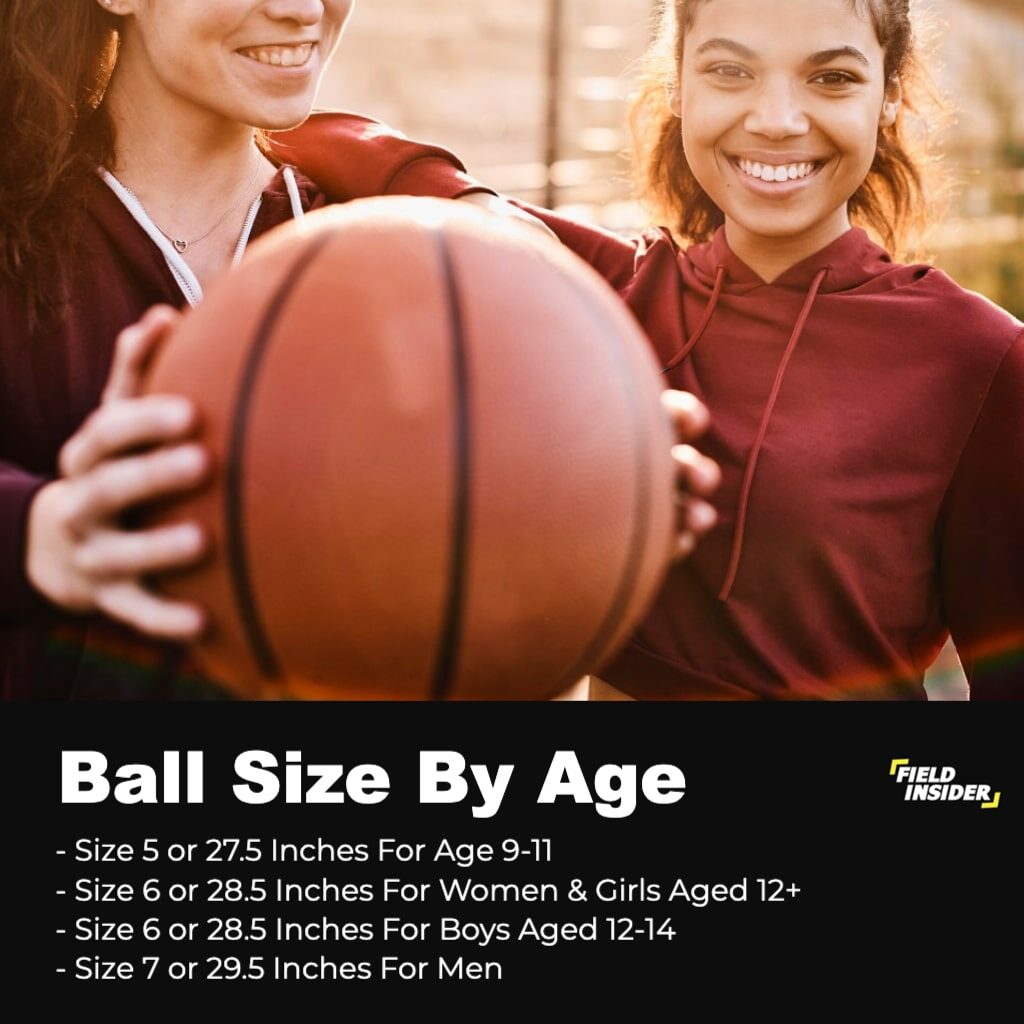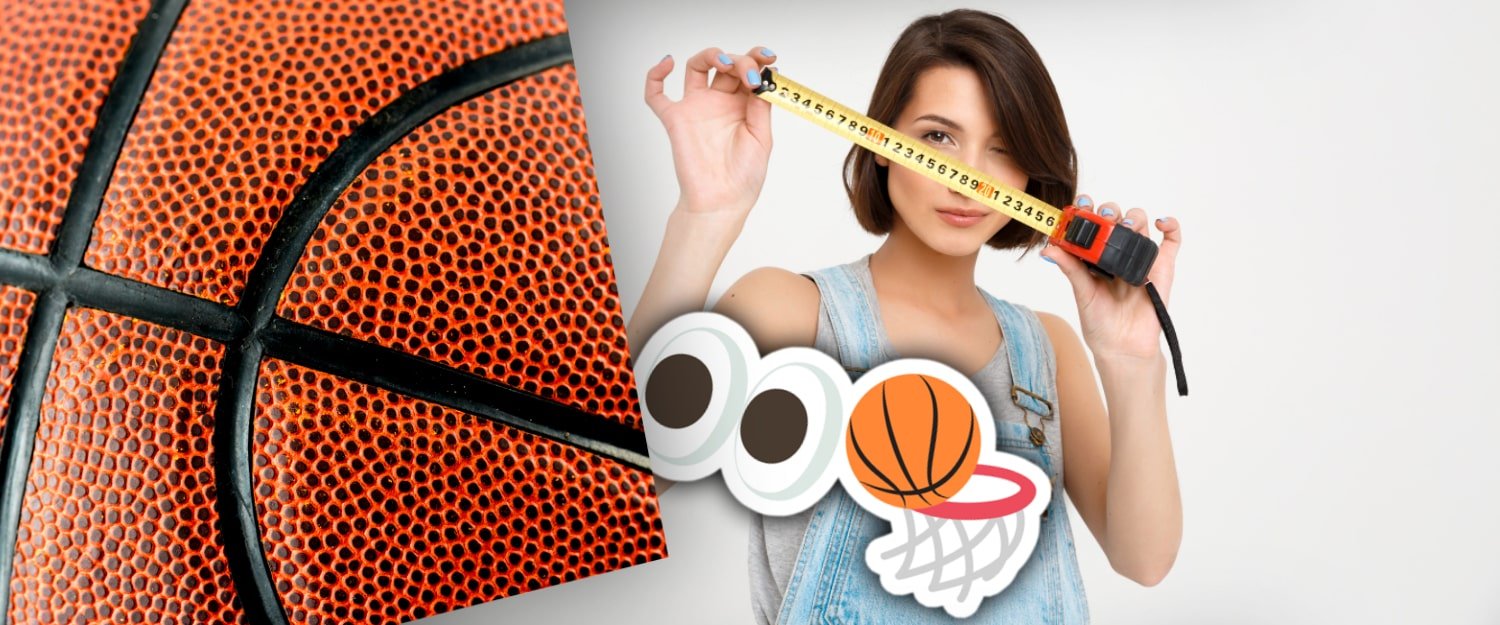Size Of An NBA Basketball: Laws, Regulations And Rules
What size is an NBA basketball? The size of a standard NBA ball is a common topic of discussion among NBA fans and actual NBA players. You might be surprised to learn that the NBA has a complex history with basketball sizes. We will discuss the precise measurements of an NBA-sized ball in this blog post.
Alternative to the NBA regulations governing these balls, we will also discuss other leagues that play with various basketballs, including the NCAA, WNBA, and FIBA.
What is the Official NBA Basketball Size?

A regular NBA-sized ball must have a diameter that falls between 9.43 and 9.51 inches, according to NBA rules, with a 29.5-inch circumference (size 7). There must be a weight of between 20 and 22 ounces. Depending on whether it will be used for indoor or outdoor games, as well as the surface.
The History of Basketball Sizes in the NBA
The FIBA officially announced the aforementioned measurements in 1979. NBA later that year, after the National Basketball Association and what had previously been known as the World Basketball League, adopted. They establish what is now referred to as just “the NBA.”
There were absolutely no rules for an NBA-sized ball prior to this day! But how did they come to choose these particular sizes in 1979? Then why are the sizes of other leagues different? To find out, let’s look back at NBA history.
Years of Progressing
Basketball dimensions in the NBA were once measured by “inches.” Players began with a 25-inch circumference ball and worked their way up to the largest ball (similar in size to what is used today for indoor volleyball).
Then they significantly raised by 1 inch at a time until they obtained the 29.5-inch circumference of the required NBA balls (used since 1979). Along the way, there were smaller balls like 27, 28, and 29 inches.
Official in 1979
Under NBA criteria, these weren’t officially official until after 1979. FIBA came into effect with its rules, which the NBA later that year followed. The addition of these metrics made it possible to uniformly measure game time conditions on any court or league. Because of this, NBA players would now find it simpler to adapt to a ball that functioned differently on an international floor or in a smaller NBA venue.
The NBA has always been quite transparent about its basketball sizes and related restrictions. This is perhaps because large rule changes have previously had such profound effects on games on top of what we currently know. Official NBA-sized balls once had a circumference of 15 inches! Then the league switched to standard 29.5-inch balls in 1979.
Along with outdoor 27-inch ones, they also created “smaller” versions for use indoors. However, all varieties of official NBA basketballs returned to the now-familiar 29.5-inch (size 7) regulation size starting in 1984. Today’s NBA players are accustomed to using these websites, but how about players from other basketball leagues?

Other Leagues’ Basketball Sizes
The NBA is not the only league with strict ball requirements for its competition. There are different guidelines regarding NBA-sized balls in other international and national leagues all around the world (and courts). The WNBA, for instance, adheres to a smaller circumference requirement.
Depending on how they adapt to this new rule, players at any level using NBA-sized balls may find themselves at an advantage or disadvantage. Two significantly different varieties of “international” sized balls are recognized by the FIBA. One that is 28.5 inches and one that is 29.5 inches in size, similar to the NBA.
Both men’s and women’s teams use NBA size balls in FIBA-sponsored international competitions including the Olympics and World Championships. However, any player or team may buy them and use them at their own risk outside of these competitions.
NCAA Basketball
For all of its competitions, the National Collegiate Athletic Association (NCAA) has its own set of NBA standard basketball size regulations. The NBA-sized and NCAA-sized balls are both 29.5 inches in circumference and 22 ounces in weight.
United States Rubber Company initially made these reduced diameter sizes official in 1901 a s a “regulation” basketball for high school teams. Then it was later adopted, starting in 1938, by NCAA universities!
There is no problem here because the NBA standard is the same, at 29.5 inches. College and university students that play in college or university leagues use this specific NBA standard size. Hence, if they ever chose to play outside of them, they wouldn’t need to adapt.
aau
NBA-sized balls are also used in AAU (Amateur Athletic Union) games alongside other leagues around the world. This can make it easier for players to adjust back to switch leagues.
WNBA
In order to be more comparable in size to the FIBA’s official “international” standard of 28.5 inches across, which has been adopted by many women’s leagues outside of its rule over top division league play, such as EuroLeague Women or Japan Basketball League, the WNBA uses a ball that is slightly smaller in circumference than the NBA at 28.5 inches (size 6), but weighs the same as an NBA one at 20 ounces.
FIBA
For their official international competition, FIBA has two slightly different NBA sizes: one is 29.5 inches across and the other is 28.5 inches across. This is to accommodate both men and women, as per its rules, they can be used interchangeably (either way round).
NBA-sized balls are permitted to be used in any of the FIBA’s competitions, although the NBA does not officially support their use as doing so is “at their own risk.”
The current FIBA 3×3 League from all around the world also uses a standard size and weight. The size is 28.5 inches (size 6), but weighs the same as standard size 7 one at 20 ounces.
| Basketball League | Basketball Size |
| AAU | Size 7 |
| FIBA | Size 7 |
| NBA | Size 7 |
| WNBA | Size 6 |
| 3×3 Leagues | Size 6 |
Recommended Basketball Sizes by Age
Basketballs come in different sizes for different age groups. What’s the right size for you?
Recommended NBA-sized basketballs are available in several age groups in the image below;

Basketball recommendations can vary by manufacturer so be sure to pay attention when purchasing your next basketball if you’re not using the specific NBA type of regulation item already.
Conclusion
In conclusion, NBA regulations demand that only basketballs of this specific size be used when competing in the NBA league or any other event that is recognized by NBA standards. NBA-sized balls have a circumference of 29.50 inches.
NBA size basketballs can be bought in NBA team colors to fit any player’s preferences, whether they are playing with friends on the neighborhood court or competing in any type of official competition that requires them to be used.
We hope you liked reading about NBA basketball size and that any information we provided were useful. If you enjoyed reading about NBA basketballs or need assistance with anything else, feel free to check back at any time as we’ll be adding more articles to this page shortly. We appreciate you reading our blog.








